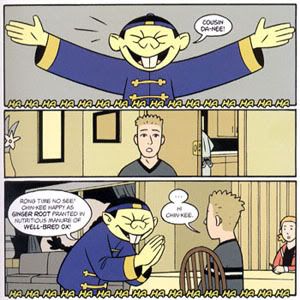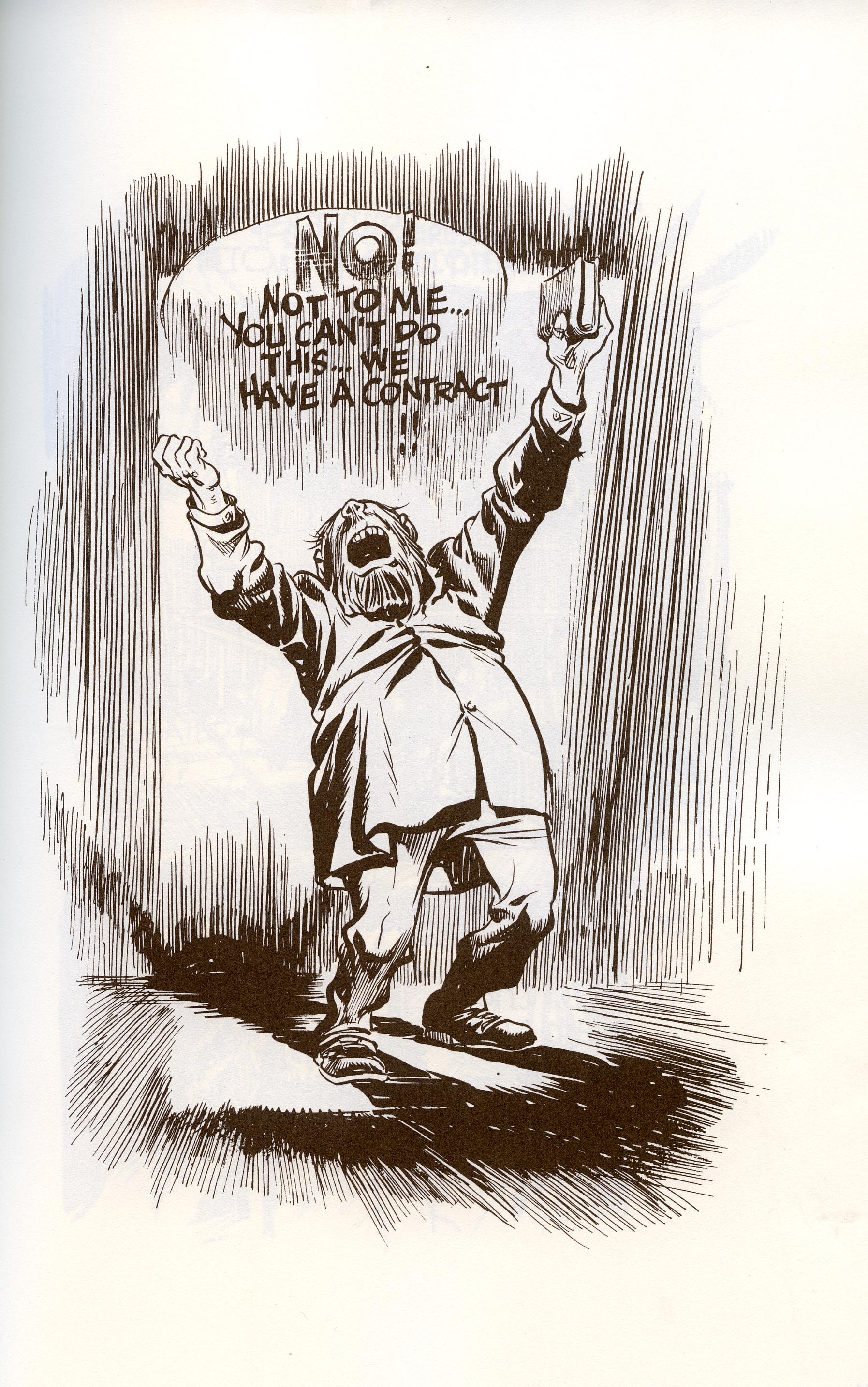Question like why does characters in comics all look cartoony? I eventually got my answer from the book: characters were designed simply to assist audience involvement. We identify with things that are more simple and view the more complicated things as the others. This is why the backgrounds in the comics are often more realistic than the characters. Even the enemies will appear to be in more details just to identify them from the protagonists.
I once found it quite difficult to adopt this theory at first because I am the type of person who would care more about the "look" over the content. If I were to pick between "Watchman" and "King City", judged by its look, I'm more likely to grab "Sandman". In fact I did. After looking at both works, I have to admit that "Sandman" is more in depth and more completed comparing to "King City". When the Sandman shows up in the comic, I had a hard time to identify with him as the main character. He is well-drawn, with beautiful lines and fine details, he is a realistic representation of a person. I would admire the art, but I feel detached from him. However, I found "King City" more friendly and it ultimately became the book I blog about for that week. Since then, I prefer to look at comics that has a simpler style. Like McCloud said, we are self-centered creatures who relates everything to ourselves. Many things are left for the reader's own interpretations.
McCloud applied his thinking in the comic itself. He said it and he demonstrated it right in front of our eyes. What impressed me was the image of McCloud - the cartoony version sticked in my head. This is one of the beauties of simplicity. It's easy to adapt and easy to remember. Even after I have looked at the real Scott McCloud in the photo, I still can't help to stop seeing him as the guy with big glasses in a plaid shirt with a lightning symbol on it.


















